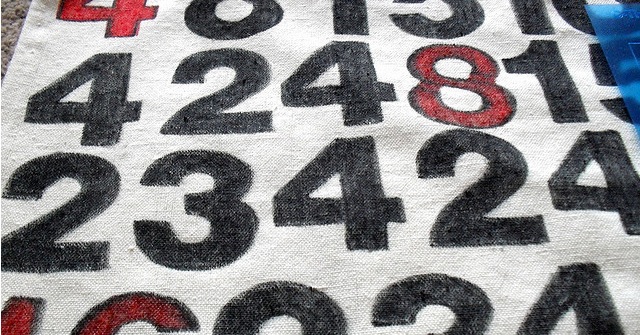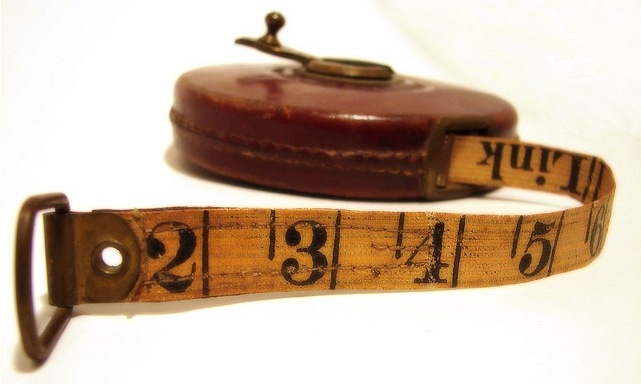A few weeks ago, I told you a story about my friend Saint who went from 60 pounds overweight to having 6-pack abs. Earlier this week I passed along four success stories from readers who saw freaking awesome results in just six weeks. Last month, I shared my talk at Google that contained more success stories with fellow nerds who made incredible changes and drastically changed their lives over the course of a few months.
Some people gained strength and muscle while others lost tremendous amounts of weight and body fat; despite the differing goals and vastly different results, they all made one specific change that helped them truly get the results they wanted:
They wrote everything down.
If you’re serious about making changes to your life and getting in shape, I cannot stress enough the importance of tracking your progress, and I don’t mean just stepping on the scale every morning and freaking out every time it goes up 1/10th of a pound. I’m talking about a plan that allows you to find and stay on the right path.
Luckily, I’m here to help you start putting these practices in place TODAY.
In the immortal words of that overweight Italian plumber, “here we gooooooo!”
The Importance of Tracking Everything

Does this sound familiar?
- You decide you want to get in shape
- You go for runs every day for a week and try to eat less food
- You step on the scale every day for a week and the numbers go down. Yaaaay!
- You go to a cookout on a Sunday, step on the scale on Monday, and its higher than before!
- You freak out, go crazy, and fall off the wagon
- Lather, rinse, repeat
I’d guess this is 80% of people who try and fail to get in shape. Fortunately, you’re reading Nerd Fitness which means you’re most likely smart, incredibly good looking, humble, and aware that doing the same thing over and over again while expecting different results is the definition of insanity. On top of that, you understand and value the importance of tracking your progress – as the saying goes “that which get measured gets improved.” This is true specifically for these reasons:
- Scales don’t tell the whole story. I’ve already covered my thoughts on scales. If you are training the right way (with an emphasis on strength training), your weight might not drop as fast as it would if you starved yourself and ran 20 miles a day. Heck, you might be getting stronger and more muscular but the scale refuses to budge. Now, if you only had a scale as your ‘measuring stick,’ you’d probably get super discouraged and depressed at the lack of “progress.” However, if you were tracking your body changes properly, you’d realize that you are making far more significant and healthier progress by doing things the right way. At the end of Saint’s journey to the Ab-promise land, his weight WENT UP while his body fat percentage went down. The scale can lie!
- You don’t know if you’re on the right path. Along with the scale not telling the whole story, it’s tough to tell if you’re losing the right kind of weight in the right kind of places. There are so many other aspects to consider other than the number on the scale, including how you look, feel, and where the weight loss is coming from – your muscles or your stored fat. It’s like driving cross country without a map, compass, road signs, or land marks to use – how do you know you’re going the right way if you have no idea where you were or where you’re headed?
- You don’t know how much you’re eating. If you’re overweight, you probably don’t realize how many calories you consume on a daily basis. If you’re underweight and “can’t gain weight no matter what you eat,” you probably don’t realize how many calories you consume on a daily basis. Americans have such a warped sense of reality when it comes to proper “portion size” and what constitutes a meal. We need to be better informed.
- You can’t tell if you’re getting stronger. Our bodies need to be constantly challenged in order to adapt and get stronger. If you do three sets of 10 push ups every day for a year…you will just be really good at doing 3 sets of 10 push ups and nothing more. You need to constantly increase the difficulty of your workouts in order to get results. If you didn’t know how you did last time, how the hell are you going to know if you’re doing better this time?
- That which is measured gets improved! I’m sure there are actual psychological reasons behind why this works, but I know that I get better results when I exercise if I know EXACTLY what I need to lift or how fast I need to run to get stronger and better. If I did 30 push ups in a row last week, then this week I have “31! 31! 31!” emblazoned in my mind while doing them…sure enough I’ll get to 31. On top of that, if you’re constantly keeping track of what you eat, taking measurements, and tracking your workouts, you will always be thinking “healthy!” and thus make healthier decisions on a more consistent basis.
Hopefully at this point you’ve at least come to the conclusion that maybe you should start tracking your progress. “Yes Steve, I have seen the light and I’m ready to start tracking my progress…tell me what the hell I need to do!”
PERFECT. Here’s how to do it.
Track Your Body

THE NUMBER ON THE SCALE DOES NOT DEFINE YOU! When you strength train and eat properly, your body tends to only shed fat while keeping the muscle you already have. Compare that to crash dieting and hours of cardio where your “weight loss” will be greater…but you’ll be losing both muscle and fat (and leave you looking and feeling like a weakling).
By tracking your body composition in more than one way, you’ll have a more accurate view of what’s working and what’s not working with your training. If after a few weeks you’re not losing the right kind of weight, you’ll know that you need to make some adjustments.
Before we get into metrics, let’s set one ground rule: Don’t track everything on a day-to-day basis. Our bodies are incredibly complex pieces of machinery where all kinds of crazy stuff happens all day and all night. Our weight can fluctuate by many pounds over the course of a day. Measuring EVERY day will promote an unhealthy OCD behavior where every tiny little change will be scrutinized and blown out of proportion. So, measure yourself once a week at the same time, I advices after you wake up and before you eat breakfast. Depending on your schedule, I’d either pick Friday or Monday mornings to track all of your measurements – if you tend to let yourself go on the weekends, I’d advise doing your measurements on Friday morning so that you’ll have a whole week to get back on track and see long-term changes.
Here are the best ways to track yourself OTHER than a scale:
Take a picture – My favorite method. Stand in front of a mirror in a bathing suit or your underwear with your cell phone camera and take a picture. Then turn to the side and take another picture of your profile view. You might not like what you see. You might not want to look at it again, and you probably won’t want to show it to anybody. THAT’S FINE. Just take the picture, hide it in a folder on your computer, and add to it once a week. You live with yourself (duh), so it’s tough to notice changes on a day-to-day basis. However, if you have two months of week-to-week photos to look back on, you’ll be able to tell if your body is transitioning in the right way.
Take measurements – Go to a craft store and buy a cheap tape measure or buy one of these self-help tape measures. Make sure your measurements are taken in the morning and not after your workout. Also, make sure you measure the same location each week – kind of weird, I know, but I pick freckles on my arms and legs so I know exactly where to measure each week. Take a circumference measurement at each of these spots and write it down:
-Neck (for most people, this is the thing that connects your body to your head)
-Shoulders (both arms down at your side, at the widest point from shoulder to shoulder)
-Chest (lift up your arms, wrap the tape measure around your chest, just above the nipple, and then lower your arms)
-Bicep (either left or right, but be consistent)
-Waist (at the belly button for consistency)
-Hips (measure the widest part of your hips)
-Thigh (left or right, but pick the same spot on your thigh each week)
-Shoulders (both arms down at your side, at the widest point from shoulder to shoulder)
-Chest (lift up your arms, wrap the tape measure around your chest, just above the nipple, and then lower your arms)
-Bicep (either left or right, but be consistent)
-Waist (at the belly button for consistency)
-Hips (measure the widest part of your hips)
-Thigh (left or right, but pick the same spot on your thigh each week)
Measure your body fat percentage – This one is a little tricky depending on your resources and financial situation. If you are severely overweight, start by I’d put your focus on measuring inches and how you look with your pictures and then add this one in once you’ve had some success. Now, if you ARE interested in tracking your body fat percentage, your best bet would be to purchase a simple body fat caliper if you’re strapped for cash. If you want to be more accurate, pay $40-60 per visit and get your body fat tested at a Bod Pod Location – a wise investment once a month (or every other month) to make sure you’re on the right path.
I am NOT a fan of body fat calculators that are built into your scale as I find them to be wayyyy too hit and miss.
Important info about body fat percentage tracking – no test is truly 100% accurate, and the specific number isn’t nearly as important as how it’s changing from month to month. If you do the body fat caliper method, make sure you measure in the same place each time, take multiple readings, and get an average. Even if your method of tracking your body fat percentage is less than optimal, you can at least make sure you measure it the same way each time to measure if it’s trending in the right direction.
In my opinion, measuring inches and observing changes in pictures is a far better estimate.
Article Source: https://www.nerdfitness.com/blog/how-to-track-progress/








0 comments:
Post a Comment
I'd love to hear your comments, do share your thoughts with me...